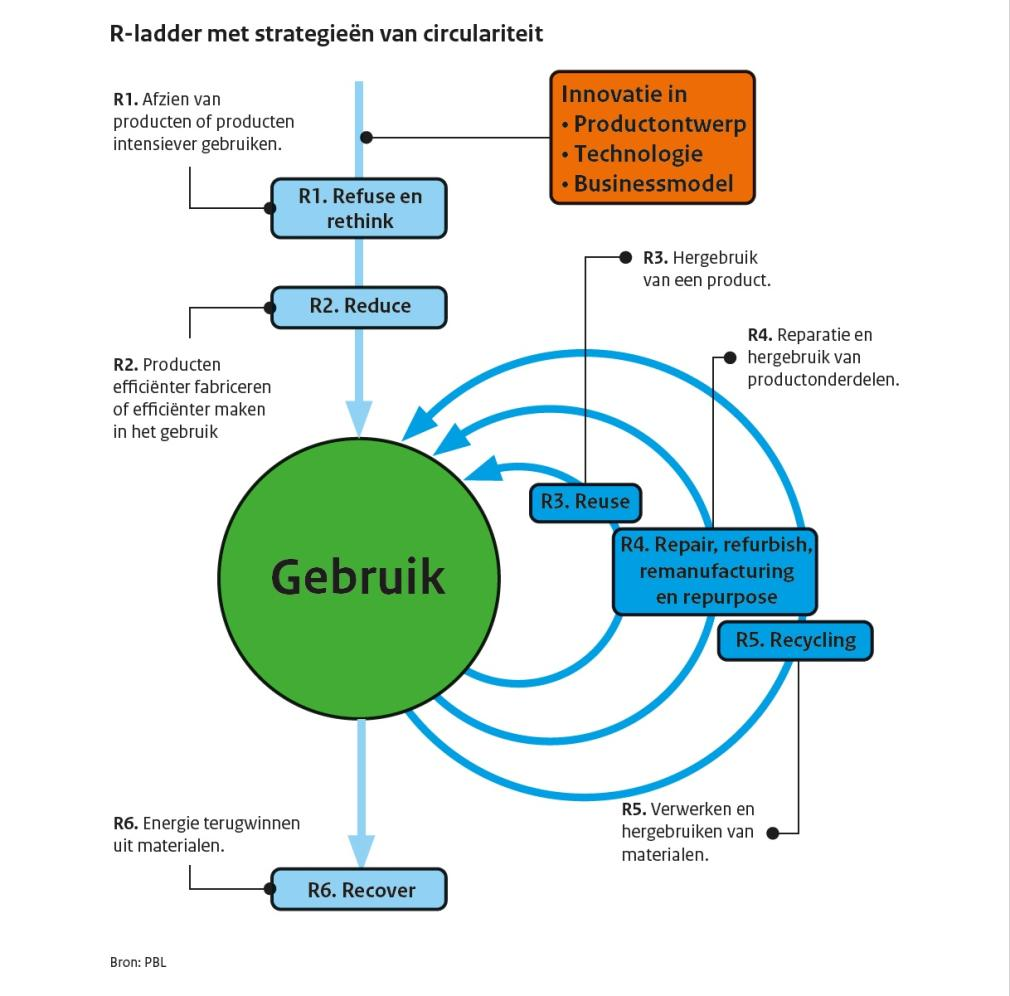Trends
In our pursuit of sustainable 3D printing, it's
essential to understand the current dynamics of
how products are utilized. The Rijksdienst voor
Ondernemend Nederland (n.d.) introduces the
concept of the R-ladder, which illustrates the
various levels of circulation a product
undergoes. The higher a product stands on the
R-ladder, the more efficiently it circulates
within the economy and the environment. By
focusing on this ladder, we can better
comprehend and enhance the sustainability of 3D
printing processes.

In our quest to prolong the circulation of
products, it is imperative to consider how we
can utilize them more efficiently. One
sustainable approach to achieve this is through
product sharing, a concept not unfamiliar to us.
Numerous companies have embraced this idea, with
Airbnb and Uber being the most prominent
examples. They prioritize the sharing of housing
and transportation resources, respectively, as a
means of promoting sustainable investments, thus
contributing to the prolonged circulation and
responsible use of these products.
Current methods and tools that don’t work
- Shapeways, while a
versatile platform for designing 3D products
with a wide array of materials, might not
align with the primary needs of our users.
What many users desire is a rapid and
cost-efficient solution for receiving their
3D printed products. Shapeways may not
always meet these criteria. Delivery times
can be highly variable, ranging from as
short as 2 business days to several weeks,
depending on your geographical location.
Additionally, Shapeways might not always
offer the most economical pricing for our
users
So what do we actually need?
should be to make users feel like
they have a 3D printer right in their own home.
To achieve this, focus on simplifying the entire
3D printing process, from hardware setup to
software usability. Additionally, make 3D
printable designs easily accessible through
online platforms, ensure faster printing speeds,
provide reliable materials, and even explore the
possibility of on-demand 3D printing services.
By emphasizing ease of use and quick results,
you can make 3D printing an appealing and
accessible technology for a wider audience.
- Airbnb's
user-friendly approach, especially
in the way hosts effortlessly sign up and
list their properties, is truly commendable.
What makes this process stand out is the
easy aproach for the user to book a place
and the inclusion of clear and informative
design,
that highlight the importance of appearance
and photos in shaping a favorable impression
for potential customers.
This meticulous step-by-step guidance
perfectly resonates with the expectations of
my target audience. My pledge is to deliver
a comparably straightforward and
trouble-free experience for our customers,
with an unwavering focus on providing
maximum convenience at every turn.

